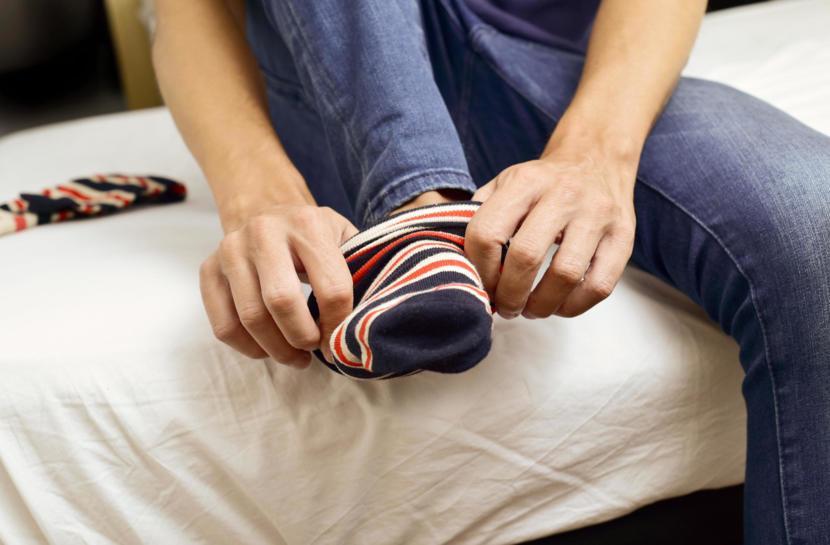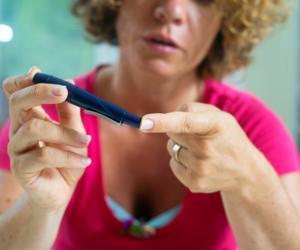Diabetic Socks? Yes, They Exist
Diabetic patients are more prone to getting foot injuries and infections. Can diabetic socks help?

Diabetes is a disorder of the endocrine or hormone system and occurs when blood sugar levels in your body are above normal. Over 25 million people in the U.S alone have some form of diabetes.
When insulin is “off” and your blood sugar levels are sporadic, diabetes can cause slow-healing sores or cuts, swollen feet and ankles, erectile dysfunction, yeast infections, weight gain, numbness or tingling of the hands and feet, and itchy skin. Other than getting the proper treatment, there are other ways to prevent some of these complications. One of them? Compression, diabetic socks.
Why Are Diabetic Socks Good for You?
Your doctor may not require you to wear diabetic socks, but when you have diabetes, you are prone to foot injuries and infections. Foot damage can be from the disease's effects on the circulatory, nervous, and immune system. Diabetic socks are specially designed to help you prevent injuries and infections that can develop because of diabetes.
You may not even know that these foot injuries exist. Nerve damage or neuropathy results in decreased sensations in your feet and an increased risk of injury. The circulatory problems in your feet due to diabetes slows down the body’s ability to heal. High blood sugar levels also compromise the body’s immune system. Put these all together and you have a tremendous risk of injury and infection to your feet.
Diabetic socks will help solve these conditions.
Diabetic socks decrease the risk of foot injury and to offer maximum blood flow. They are also developed to keep the feet dry. When you purchase diabetic socks, look for these features:
- No seams. Socks with seams rub against your skin and cause blisters or which are harmful to diabetic feet. You don’ heal quickly, and if blisters break, they can become infected. The seamless design of diabetic socks includes an inverse linking. This linking keeps the ends of the toe linking thread outside the sock rather than against your toes.
- Non-constricting. Diabetic socks should be somewhat loose and non-constructing. Tight socks inhibit circulations, and poor circulation may trigger sores and injuries.
- Padding. Cushioning for sensitive areas on your feet is essential and helps prevent injury. Extra padding also enhances comfort. The padding in diabetic socks run along the bottom of your sock, over the toes, and at the heel of the foot.
- Warmth. Diabetes causes blood vessels to restrict, and this decreases circulation in your feet. Diabetic socks need to be manufactured from fabrics designed to keep your feet warm. Warm feet helps with blood circulation.
- White soles. White soles may not sound significant, but if you have compromised sensations in your feet when you have a wound, it will show up on the fabric of your sock.
- Moisture-wicking. You need to keep your feet dry. Dry feet prevent skin infections. Many diabetic socks are made from polyester, bamboo, acrylic, and charcoal. These materials offer moisture-wicking abilities.
- Anti-microbial. Socks that are anti-microbial prevent bacterial and fungal growth in the moisture regions of the feet.
- Soft yarns. Finer textured fabrics and materials that contain bamboo are used in diabetic socks to help reduce abrasion and rubbing against the skin of your feet.
- Diabetic socks meet all the requirements for healthy and comfortable diabetic feet, but anyone who wants socks with high quality and comfort can wear these socks.
Compression and Diabetic Socks and Their Differences
People with people with diabetes often wear medical compression socks to keep down the swelling in their lower legs and feet. However, there are distinct differences between compression socks and diabetic socks.
Diabetic socks are developed to minimize the pressure on the lower legs and feet. Compression socks apply pressure on your legs to increase blood pressure or to allow more blood to be returned to the heart quickly. Compression socks are tighter and more binding than diabetic socks and regular socks.
People with diabetes who have decreased pedal pulses, or the pulses measured at the top of the foot and behind the inner ankle,who have changes in color and temperature of their feet, or suffer from nerve damage, or any other sensations in their feet need diabetic socks. Those who are prone to redness, swelling, and irritation spots should purchase diabetic socks.
It is also recommended that pregnant women who suffer from gestational diabetes wear diabetic socks. These socks are helpful to control your swollen feet. They are lightweight and breathable, and keep feet warm, and lessen the risk of developing blood clots and deep vein thrombosis.
You may feel you do not need diabetic socks for regular daily wear, but if you travel or sit for long hours, or if your feet are prone to swelling, purchase a pair of diabetic socks. These socks keep your feet warm and toasty without elastic bands that bind your skin. No elastic bands make these socks comfortable.
Types of Diabetic Socks
Diabetic socks are made with different padding types. You can buy diabetic socks with padding in specific areas and with different thickness levels. If you are on your feet extended amounts of time, you might want socks that have extra padding on the heels. Extra padding in the heel areas offers extra support. If you are a runner or exercise often, your diabetic socks may need more padding in the balls of your feet to help prevent friction induced ulcers in this part of your feet.
Do you play tennis or soccer? You may need extra toe padding to avoid toe-related injuries.
Retailers offer diabetic socks that are made from fibers that increase the depth of thread loops. Gel padding is also an option. There are gel formulas in socks that are proprietary and other gels that may just be made from silicone. Whatever padding you need, research has discovered that having padding in specific areas supports the sock's purpose in moisture-wicking, minimizing irritation and sensitivity, relieves aches and protect from injuries.
Wear your diabetic socks based on your purpose. Over the calf and over the knee styles are popular for those with circulation issues. However, if you live an active lifestyle, diabetic sports socks can be purchased in ankle and crew lengths.
You have choices of different patterns and color designs. You don’t need to wear plain white or skin tone socks. You can choose stylish diabetics socks that will fit your fashion wants. There are also low-cut and Merry Jane style diabetic socks available in different brands.
Smart diabetic socks are available, that use fiber-optic sensors to monitor your pressure, foot joint angles, and the moisture in your feet. These sensors warn of potential ulcers or injuries for those people with diabetes who have nerve damage. These smart socks can reduce the number of amputations and deaths due to foot ulcers and infection.
Use your diabetic socks from the minute you step out of bed until right before you go to bed at night. The less time you go barefoot or wear normal socks, the less likely you will injure your feet by accidentally stepping on stuff on the ground that can injure your feet. Diabetic socks lessen the friction on the foot from the floor surface, and the socks keep your feet warm and the blood circulating.














